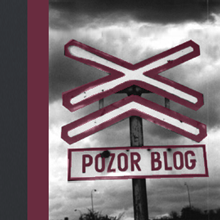Trends and Comparisons Monthly Report
I offer here, as every month, a general and rather idiosyncratic look at poll numbers for Slovakia from rival political polling firms FOCUS and UVVM. (Toward that end, there will be a debate tonight–March 5 at 17:00–between Pavol Haulik of MVK–another of the big 3–and Ivan Dianiska from FOCUS at the Bratislavsky Institut Humanismu’s Klub BIH at Grosslingova 53). I’ll blog that if I can.
This graph of recent polling results for Smer from multiple sources shows an overall rise for Smer by 3-5 percentage points in both of the major polls. These take it back to the highs that it reached in early 2007 before declining a bit. At present there is a strong inverse correlation between Support for Smer after the 2006 election and average monthly temperature. There is no evidence, however, that /this/ summer will bring a decline in Smer support.
This graph of recent polling results for SDKU shows a decline that is roughly inverse to Smer’s rise, though the average of UVVM and FOCUS did not change over the last 3 months. March should tell us what the sudden visibility of leadership questions in the party have on its overall popularity. I would suspect the effect is small, and may be clouded by the effects of problems within KDH. Next month might show lots of change, or it might show no change at all in a way that hides lots of countervailing shifts in party preference.
This graph of recent results for SNS shows movement without fundamental change. The party floats consistently now between 11% and 14%
This graph of recent results for MK shows why poll averaging is important: individual poll changs tend to combine to reflect the overall stability that MK possesses on the basis of its strong ethnic support.
This graph of recent results for HZDS showsa slight recovery in both FOCUS and UVVM for February but not enough to counteract the significant decline from Nov.-Jan. in the wake of the SPF scandals.
This graph of recent results for KDH shows gentle decline. We shall see whether the departure by Palko and Miklosoko affects the overall party performance. Loss of 2 of the 4 most popular individuals might hurt it somewhat, but it will be stabilized by the preservation of the party’s organizational base and by the fact that Palko et al did not immediately create a new party (which seems like a major tactical error, but perhaps one they could not avoid without prematurely reveailing their intentions). Supporters of Palko and Miklosko as of yet do not have anywhere else to go. It is interesting that in his recent interviews Palko has talked about a “party of patriotism” that would seek voters as much from SNS as from KDH. Whether this is realistic is an open question, though the potential erratic ebbs and flows of SNS leadership suggest that there is a tradeoff: a new party has a small change to make big gains at the expense of SNS, and a big chance to make small gains at the expense of KDH. As always, much will depend on timing.
For reasons that are not entirely clear to me, both UVVM and FOCUS show a significant and similar 2-point decline for KSS over the last 4 months. I hope at some point to write a brief note about the usefulness of maintaining party brand names because of their potential to re-emerge (KSS in 2002, SNS in 2006 in Slovakia; SZ in the Czech Republic) but I’m not sure they can successfully re-emerge twice.
This graph of recent results for SF shows a flat line, as do results for ANO. It will take a lot for these to re-emerge.
